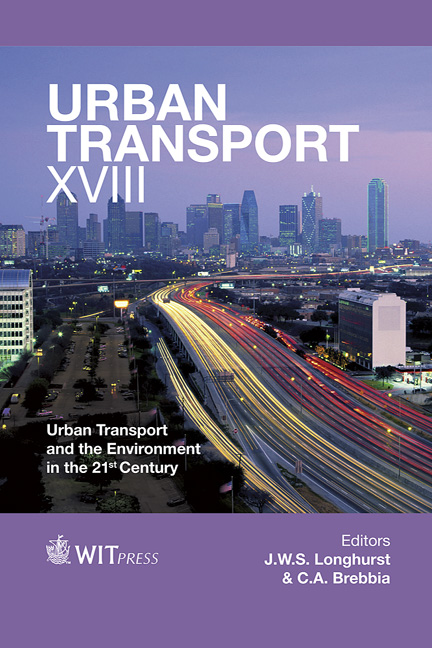Comparison Of Greenhouse Gas Emissions From Different Vehicles Covering The Entire Life Cycle
Price
Free (open access)
Transaction
Volume
128
Pages
11
Page Range
85 - 95
Published
2012
Size
479 kb
Paper DOI
10.2495/UT120081
Copyright
WIT Press
Author(s)
J. Perez, J. Lumbreras, J. M. López, J. A. Garcia, M. Vedrenne, J. M. de Andrés & D. Paz
Abstract
The aim of this paper is to compare the greenhouse gas (GHG) emissions from different types of vehicles, including electric and hybrid, during their entire life cycle. To estimate these emissions, a tool developed by the Technical University of Madrid (UPM), GlobalTRANS, was used. This tool integrates not only Tankto- Wheel emissions (exhaust), but also Well-to-Tank, vehicle manufacturing and disposal emissions. In this study a typical Battery Electric Vehicle (BEV) was compared with traditional internal combustion vehicles, such as gasoline, diesel or LPG cars as well as with hybrid vehicles (electric-gasoline) for the Spanish case. Finally, a sensitivity analysis was done to evaluate the influence of the BEV’s electric consumption on its GHG emissions. For this purpose, emissions were estimated using GlobalTRANS modifying the electric consumption of the vehicle within the range of 100–250 Wh/km, in accordance with BEV catalogue vehicles available in the Spanish market. Keywords: greenhouse gas emissions, electric vehicles, life cycle, road transport, hybrid vehicles. 1 Introduction The transport sector, either passenger or freight transport, is an activity of great importance under social and economic point of view. However, it is also the main source of atmospheric pollution and greenhouse gas (GHG) emissions [1, 2]. This issue has deep consequences on human health and ecosystems,
Keywords
greenhouse gas emissions, electric vehicles, life cycle, road transport, hybrid vehicles.





